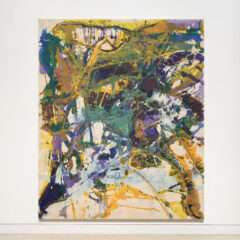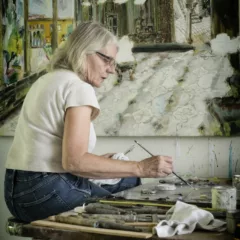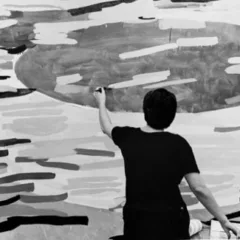If a horse rolls over in a forest and no one hears it, does it make a sound? Not in Nadia Hironaka and Matt Suib’s silent video “The Fall” (2010), a short black-and-white fantasy piece that’s part of the couple’s debut at blue-chip Locks Gallery. Notably, this is Locks’ first exhibit of local video art.
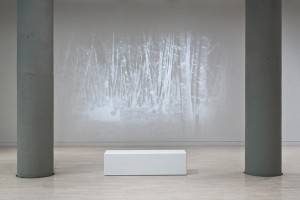
The horse in question—a ghostly apparition that seems more unicorn—has its star turn in a bleak birch forest. The camera moves slowly forward through dense woods to reveal the animal, which rolls on its back, kicks at the air, then gracefully gets up and trots out of the picture. The camera reverses direction through the woods and, doubting your eyes, you begin another loop of the two-minute piece.
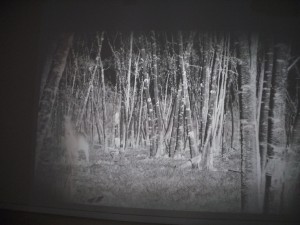
The mesmerizing video is an odd mix of old-school storytelling and up-to-the-minute video techniques. The HD video has so much digital dodge and burn that it evokes a world seen via X-ray, or through night-vision goggles. Yet the piece, projected large on the gallery wall, has old-fashioned pinhole-camera framing, and its content is right out of a fairy tale. Pining after beauty and purity in a damaged world is a well-loved theme in art, and Hironaka and Suib do it particularly well.
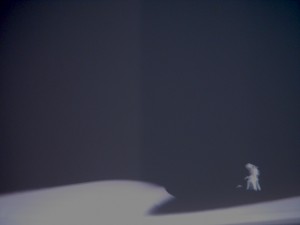
The other video in the show, the two-channel “Whiteout” (2010), is likewise full of night-vision visual edginess and fantasy tinged with unearthly beauty. An eight-minute stream of images runs the gamut from nature to bombed-out buildings, with the main role played by a Hazmat-suited searcher carrying a metal detector roaming sand dunes. A quiet but insistent soundtrack of music, noise, voice and static washes over the gallery like random sounds picked up from radio stations, movies and wartime walkie-talkies.
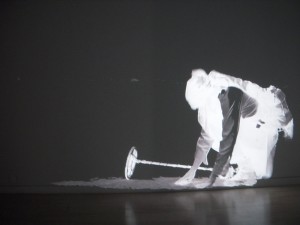
This is postapocalyptic storytelling, rooted in cinematic war stories and the artists’ own love of the earth. There’s great visual beauty here, but it’s awash in darkness and sorrow. A narrative of destruction and danger is suggested as the human figure tromps endlessly on. It’s humankind out of its element—David Bowie’s Man Who Fell to Earth or Neil Armstrong’s moonwalk—but stripped of optimism.
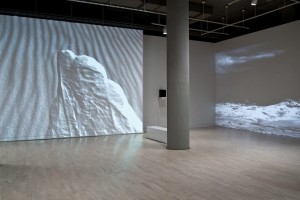
With the gallery lights off, as I saw it, the pieces have great drama in the cool, dark space. According to the gallery notes, the artists mean you to see the work with the lights on. Try it both ways—the gallery staff is amenable. The graphic punch of “Whiteout” would suffer with the lights on, but “The Fall” might gain additional mystery if seen white-on-white on the wall like a magic apparition.
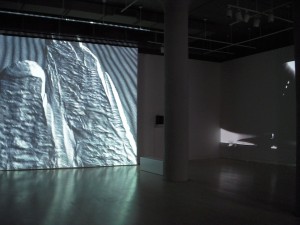
A third nonvideo work, a cut-vinyl piece that repeats the sand-dune patterns seen in “Whiteout,” is a weak echo of the video. It might be more successful with a blacklight projection to give it some mystery or cinematic presence.
Hironaka and Suib are a husband-and-wife team who began collaborating in 2007 after separately achieving local and national renown for their solo works. They founded the just-shuttered Screening Video in 2007 and were both Vox Populi members. This is their first show at Locks Gallery.
Nadia Hironaka & Matt Suib: “Whiteout.” Through July 30. Locks Gallery 600 Washington Square South 215.629.1000



